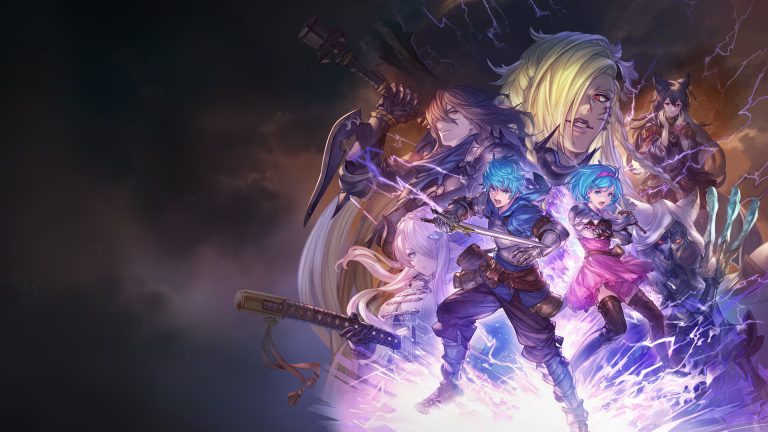
We all play games for different reasons. Indeed, as individuals our motivations to play games shift continuously. Whether we’re playing to pursue the respite of escapism, or have some competitive urges to sate, we can all get different things from games at different times.
That statement will likely feel rather obvious. ‘We play games for different reasons’ is a plainly straightforward assertion. But behind it lies considerable nuance; subtleties games makers can identify and harness to guide the design or their games in pursuit of both commercial and critical success.
So what are the leading player motivations, and how can understanding them help your efforts in making and publishing your games?
Let’s start by considering the eight most common player motivation, and how they connect with making a game that engages, retains and – hopefully – monetizes.
1. Competition
With a history spanning everything from some of the earliest arcade games to the most recent esports clashes, competition is a core tenant of many games’ design. It plays on a deep psychological instinct to succeed and survive. In the case of mobile games, competitiveness is harnessed by numerous titles, from Fortnite to Clash Royale. With regard to retaining and engaging players, competition lets users build status within a title – perhaps displayed via rank, on squad banners in lobbies and so on. Having built a reputation or standing within a competitive game, players will come back to maintain and push that status. Importantly, in harnessing the psychology of competition, you need not only provide the competitive gameplay itself – but also rewards and ways for players to communicate and share their successes in-game and beyond.
2. Skillfulness
Closely related to competition, skillfulness appeals to players in that it can provide means to share proof around competency or mastery. It is about the pursuit of status and recognition. Also with its roots in arcade – where 1976’s Sea Wolf introduced the term ‘high score’ – skillfulness can be a part of any game where a player is set against either a system or another player. Broadly ‘skill’ can even include the likes of being competent at interactions with narrative gameplay – but is more commonly understood to refer to the likes of reaction or ‘twitch’ gaming. As with competition, skill can engage and retain by providing players with ways to assert their achievement in a given game – high score presenting the classic example.
While combining skill with hypercasual and casual gameplay might sound like an incompatibility, it can be seen across numerous action puzzle games such as Cut the Rope. Level-based star rating systems also offer a means to keep players returning to a game, where the motivation of skillfulness compels them to pursue securing a three-star (or similar) rating across all levels. Many of us gamers, it turns out,. Are perfectionists.
3. Achieving
Achieving relates to the psychology of making progress and leaving impact. We are all motivated to achieve across various facets of our life – for reasons as varied as self-worth and survival. That is why achievement systems so often compel players to stay with a given game long after any main campaign may be complete. While competition and skillfulness relate to very specific forms of achievement, ‘achieving’ as a category of motivation can include many forms of progress and accomplishment, from clearing levels to unlocking items through gameplay. As such, always have something else a player can achieve if you are looking to extend retention.
Achieving is also linked to the psychological phenomena of ‘loss aversion’, which describes a cognitive bias where the negative feelings associated with potential losses of previous achievements matter more to a player than any positive feelings experienced by making gains of an equivalent value. Loss aversion could encourage players, for example, to invest in an IAP booster that allows them to get over the finish line of a level, rather than losing all their progress up to a point where they have run out of enough turns or lives to complete a level – a mechanic employed early on by Candy Crush Saga.
4. Reasoning
Reason describes our own capacity to deliberately apply logic in the pursuit of better understanding the reality we exist in. It’s an important tool for individually interpreting our surroundings – and key to our species’ intellectual, scientific and technological forward journey. And, much more simply than that, it feels rather rewarding to uncover, discover and unpick information. All of which describes the enduring appeal of the powerfully compelling puzzle genre. Some examples showcase the commercial potential of games with reasoning at the heart of their gameplay. But it’s worth noting that reasoning gameplay can be installed in almost any game genre, particularly through additional modes or secondary and occasional gameplay mechanisms.
5. Creativity
The motivations for creativity are, of course, very broad. For some it is about expression, while for others there may simply be a pleasure in the praxis – the creative process – of actually producing something. In games that allow players to be creative, the psychological motivations are typically around expression and identity.
Customizable player avatars, for example, matter deeply to many players concerned with how they appear in a game. In other cases there are motivations to create content that can be shared across a game and its community. That can assert status within a playerbase – linking creativity to the motivations of achieving, skillfulness and socialising. Offering players ways to not only create and be expressive, but to also share and display their creations, can be vital in fostering and maintaining a particular kind of community.
6. Socialising
The basic motivation behind socializing is part of our biology. We are famously a social species. That our compulsion to interact with others also exists within games, then, should be no surprise. Social games – be they online or local multiplayer, turn-based, cooperative or simply community-centric – speak to our need to interact with other people. Games with social elements engage and retain because huge numbers of players commit time to communities they feel a part of. Certainly, there are players who prefer solitary gaming genres.
The best strategy, then, can be to ensure any game has some optional social element. A multiplayer title like Among Us offers an obvious example of predominantly social gameplay. But what if you’re crafting a single-player arcade genre title? There the likes of online leaderboards, clip sharing, community challenges and so on can help you connect with socially-minded players, without muddling the purity of your game design.
7. Relaxation
Downtime is important time. It’s an opportunity to recover and recharge. And in a stressful world, games offer a place of respite and relaxation for many of us. Sometimes we don’t turn to games for thrills or challenges, or to be scared or excited. Relaxation isn’t just about pleasure – it’s a need; and thus many players are motivated to pursue it, even if they might normally be into particularly demanding fighting games, or a similarly challenging genre. As seen with the success of idlers, mediative, tranquil experiences can not only offer creatively distinct experiences; but they can be tremendously commercially successful.
Even if you are not building a deliberately relaxing experience, consider low-demand modes – perhaps those that remove scoring or time constraints. And remember that relaxing games are often also very welcoming to inexperienced users, meaning they can have a broad hypercasual appeal. Being mindful of accessibility too, can help here, as an accessible game is more welcoming to every kind of player – though don’t assume that players that depend on accessibility only want relaxing games. That is far from the case!
8. Exploration
Anybody who is a gaming ‘completionist’ that can’t step away from a title until every nook and cranny has been thoroughly checked for hidden items and collectibles will know the allure of exploration. It’s a motivation that stems in part from the human need to feel familiar and safe with our surroundings. In games, exploration is common to many genres, and plotting a route through is compelling to large audiences. Offering means to extend exploration, meanwhile, can bring a significant retaining power – players that are set on the pursuit of completion will keep coming back for more. So think about how and where you can add additional motivations for exploration in your game – either outside of a main campaign, or away from the core gameplay mechanisms.
Interpreting Player Motivations
With all of the above in mind, an important question remains. How should a game maker or development team apply an understanding of player motivations? While you can start to think about these factors at the very start of your game design process, the opportunity here isn’t about trying to conceive of a game that capably covers all of the motivations above. Rather, there can be a great deal to be gained from identifying games that lean into or harness similar motivations to your own creation. That affords you the chance to analyse their successes, failings, use of monetization model, release strategy and more. Or, you might simply find a gap in the market where a particular blend of player motivations are underserved by existing releases.
There aren’t many tools that let you meaningfully browse games by player motivation – but we at GamesAnalytics have one. GameIntel, our new mobile intelligence platform, lets you browse games by player motivation, making it much easier to zero in on and learn from relevant releases, giving you an access to a wealth of insight and data. Available affordable with an indie license, GameIntel also provides information that can inform ideation, wider product research, ad campaigns, release strategy, success metrics and more.
And whether you use GameIntel or not, it’s important to remember that the motivation for play will impact the relationship players have with your game, regardless of what genre of game it is. So consider it very carefully indeed.












